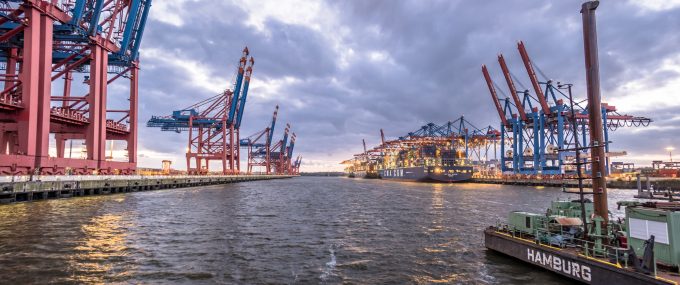HHLA to buy a 51% stake in Austrian intermodal specialist Roland Spedition
Hamburg terminal and intermodal operator HHLA is set to expand its central European rail network, ...

HHLA’s first-quarter Hamburg volumes may have declined, but international operations at Tallinn and Odessa helped group container volumes grow by 2.2%, to 1.86m teu.
Overall, the group’s container terminal segment fared well over the three-month period, as revenues climbed 4.8% to €200.9m, pushing divisional profits up 15.6% to €37.8m.
Group-wide revenues were €339.8m, while ebit rose strongly by 26.1 % to €55.7m, largely thanks to strong growth in intermodal volumes which rose by 13.7%.
Chairwoman Angela Titzrath explained that much of the growth in container terminal profits was due to a temporary increase in storage fees and a rise in rail share.
“The results provide a firm basis for us to reach our guidance for the year,” she said. “We are therefore intensifying our efforts to systematically implement our strategy, which is focused on strengthening our creative power and future viability.”
Container volumes across the group climbed 2.2%, to 1.8m teu, however, growth at its German operations remained stubbornly flat – a feature that has been a hallmark at Hamburg for the past few years.
The three Hamburg container terminals recorded a 1.3% decline in throughput to 1.7m teu for the three months to April.
The operator said: “This was due to the changes of services (addition of several services to North America, disposal of a Far East service). Feeder traffic developed very heterogeneously in the various Baltic region routes, but stagnated overall at the prior-year level.
“The proportion of seaborne handling by feeders increased slightly by 0.4 percentage points to 23.5 % [compared with] the previous year’s 23.1%.”
International volumes at the Odessa and Tallinn terminals almost doubled, from 81,000 teu in the same period last year, to 143,000 teu. However, the operator noted that this was largely down to Tallinn being brought online during the second quarter of last year.
Although not the only operator at Hamburg, HHLA controls a large share of volumes at the port, which has struggled to compete with its north European rivals in recent years.
Throughput declined for the second consecutive year at Hamburg in 2018, and these early signs don’t look good, especially with rival Antwerp recording growth, albeit marginal, in Q1.
Chief executive of Antwerp Port Authority Jacques Vandermeiren said: “Our container throughput continues to grow despite the weakened economic outlook. This is good news and consolidates our excellent position as a container cargo hub in the global logistics chain.”
However, with the other Hamburg terminal operator, Eurogate, not having yet disclosed first-quarter figures, Hamburg may yet show recovery – Eurogate yesterday welcomed the maiden call of the Ocean Alliance’s Loop 7 Asia-North Europe service, which could add volumes to the port.
Comment on this article